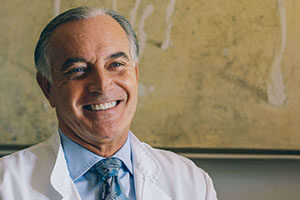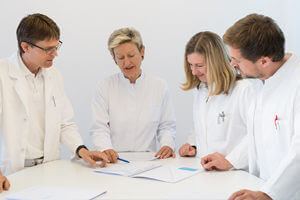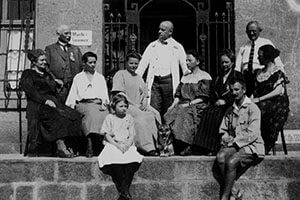Dr. Otto Buchinger (1878 – 1966)
Dr. Otto Buchinger (1878 – 1966) experienced the self-healing powers of fasting at first hand when he became unable to work as a result of severe rheumatism of the joints and subjected himself to a 19-day fast.
He was a specialist in internal medicine, a precise observer and scientist. His book “The Therapeutic Fasting Cure”, published in 1935 and still in print today, was the first systematic description of the physiology of fasting and the diseases that are still listed as indications for fasting today.
He also loved nature and was a deeply spiritual person, who saw fasting not as an absence, but as a state of moderation and inward orientation.
He attached particular importance to spiritual inspiration during fasting through nature, music, prayer and contemplation. He valued aphorisms and coined the phrase, “During fasting, the body thrives, but the soul hungers”. To counter this, people who fast should be given “spiritual food”, which he described as “dietetics for the soul”.
Spirituality and fasting
Spirituality starts with having time – you have time when you fast. Spirituality also means letting things happen. During fasting, our body draws on the nutrients stored within it without us influencing this process actively. Spirituality means being in the here and now, and accepting what comes. Silence is part of the spiritual dimension of fasting as a way of accessing our inner peace.
We discourage idle chat, telling superficial stories, and judging others. This is promoted by the special feeling of calm that pervades our body during fasting. The process of generating energy from eating and processing food – along with the syntheses it involves, the transport of nutrients, the production of juices and gastrointestinal movements – no longer determines our daily rhythms, but takes a back seat. Often, we are suffused with a sense of harmony and even happiness.
All behavioural patterns are interrupted during fasting: It is like taking a quantum leap to a new time and space.
The spiritual challenge is accepting this space and having the confidence to let it happen. Then the spiritual dimension can unfold.
The Buchinger Wilhelmi programme today
Today, the Buchinger Wilhelmi programme is still based on the three traditional dimensions of fasting:
- medical and physical dimension (accompanied by medical treatment, based on scientific knowledge and adapted to individual needs)
- mental and spiritual inspiration
- interaction and intercultural encounters with other guests in the clinics
Otto Buchinger had a strong influence on the first two dimensions – the medical and the spiritual. His daughter Maria Buchinger Wilhelmi developed the third dimension of warm-hearted, interpersonal communication.
Dr. Otto Buchinger was succeeded by Dr. Heinz Fahrner and Dr. med. Hellmut Lützner as well as Dr. Gisela Falzone and Dr. Karl Spießke.
Both Dr. Heinz Fahrner and Dr. Hellmut Lützner published numerous articles in naturopathic and medical journals. Two further generations followed with Dr. Françoise Wilhelmi de Toledo in Überlingen and Dr. José Manuel Garcia-Verdugo in Marbella, who developed the programme as we know it today.






